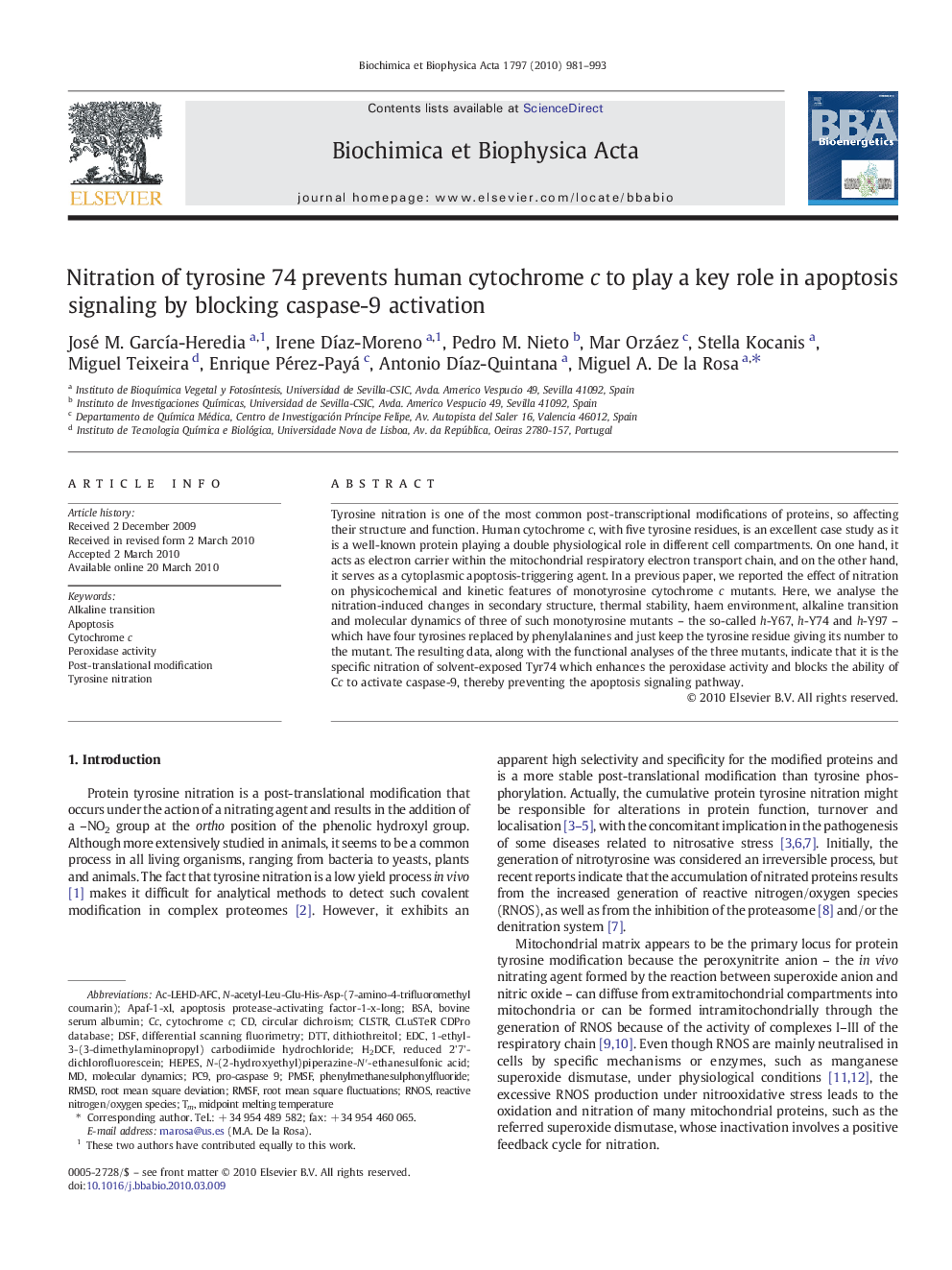| Article ID | Journal | Published Year | Pages | File Type |
|---|---|---|---|---|
| 8298941 | Biochimica et Biophysica Acta (BBA) - Bioenergetics | 2010 | 13 Pages |
Abstract
Tyrosine nitration is one of the most common post-transcriptional modifications of proteins, so affecting their structure and function. Human cytochrome c, with five tyrosine residues, is an excellent case study as it is a well-known protein playing a double physiological role in different cell compartments. On one hand, it acts as electron carrier within the mitochondrial respiratory electron transport chain, and on the other hand, it serves as a cytoplasmic apoptosis-triggering agent. In a previous paper, we reported the effect of nitration on physicochemical and kinetic features of monotyrosine cytochrome c mutants. Here, we analyse the nitration-induced changes in secondary structure, thermal stability, haem environment, alkaline transition and molecular dynamics of three of such monotyrosine mutants - the so-called h-Y67, h-Y74 and h-Y97 - which have four tyrosines replaced by phenylalanines and just keep the tyrosine residue giving its number to the mutant. The resulting data, along with the functional analyses of the three mutants, indicate that it is the specific nitration of solvent-exposed Tyr74 which enhances the peroxidase activity and blocks the ability of Cc to activate caspase-9, thereby preventing the apoptosis signaling pathway.
Keywords
DSFreactive nitrogen/oxygen speciesphenylmethanesulphonylfluorideRNOSH2DCFAc-LEHD-AFCRMSFPMSFRMSDDTTHEPESEDC1-ethyl-3-(3-dimethylaminopropyl) carbodiimide hydrochlorideBSAbovine serum albuminpost-translational modificationAlkaline transitionApoptosisMolecular dynamicsdithiothreitolcircular dichroismRoot Mean Square Fluctuationscytochrome cperoxidase activityDifferential scanning fluorimetryroot mean square deviationTyrosine nitration
Related Topics
Life Sciences
Agricultural and Biological Sciences
Plant Science
Authors
José M. GarcÃa-Heredia, Irene DÃaz-Moreno, Pedro M. Nieto, Mar Orzáez, Stella Kocanis, Miguel Teixeira, Enrique Pérez-Payá, Antonio DÃaz-Quintana, Miguel A. De la Rosa,
